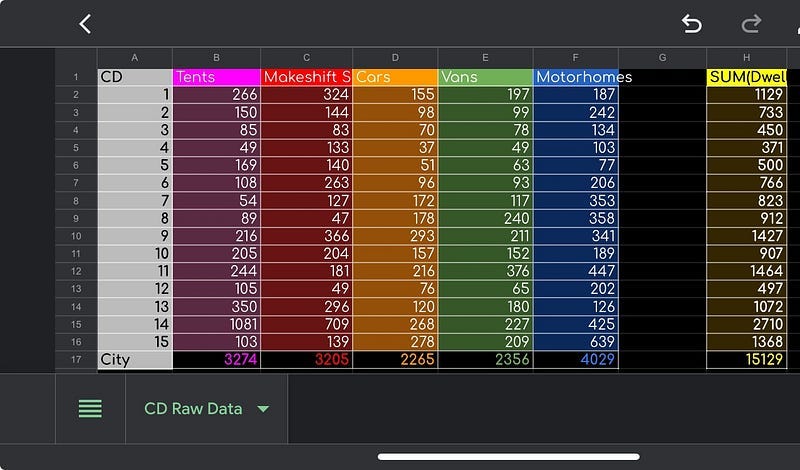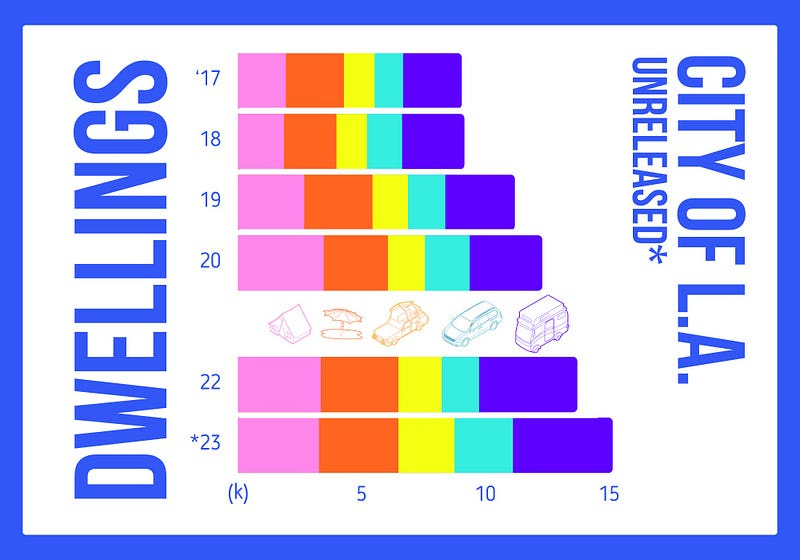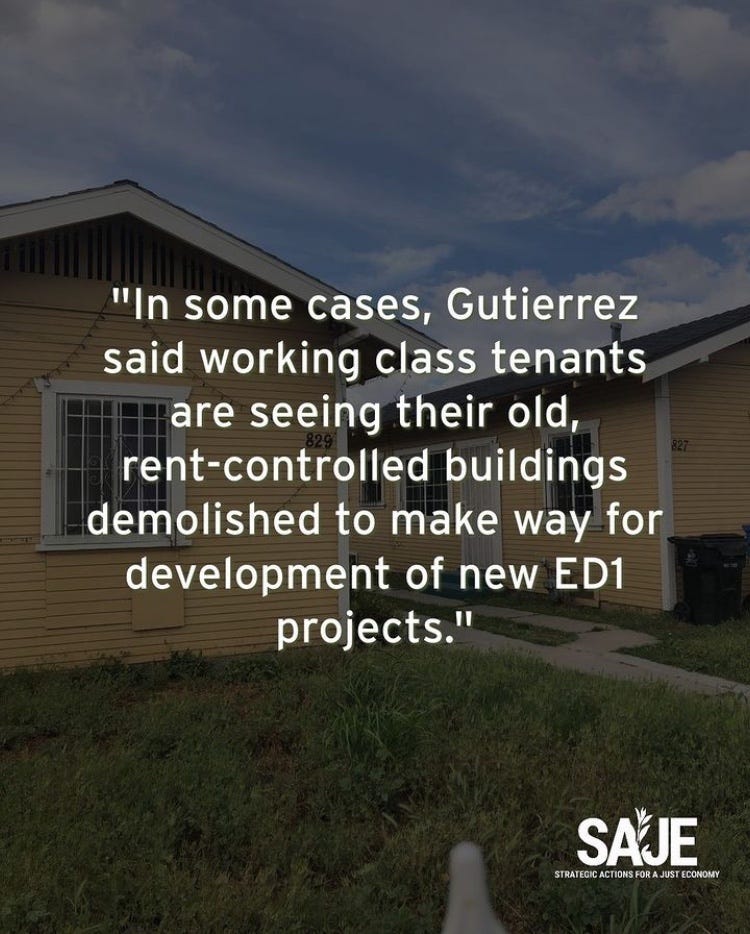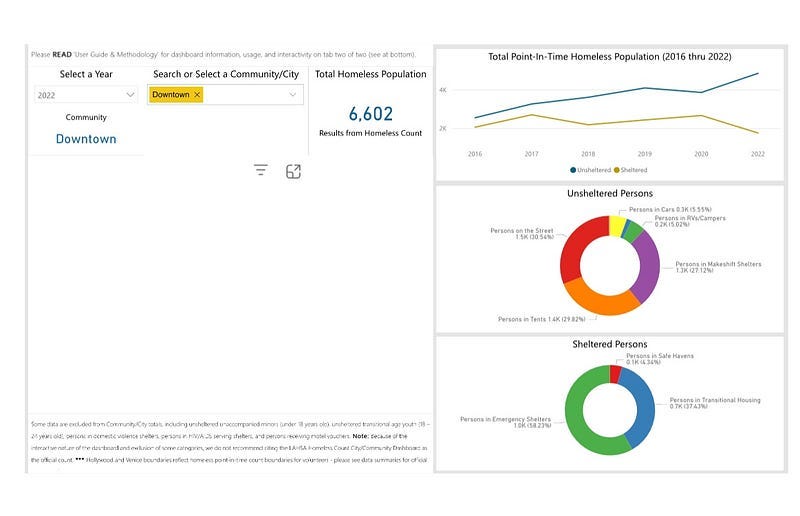EXCLUSIVE! LAHSA withheld 2023 Homeless Count data at USC’s advice. 👁️See it here👁️
Why is USC leading LAHSA’s 2024 point-in-time (PIT) count, when they did not produce accurate results worth publishing in 2023?

January 2023’s PIT Count (HC23/GLAC #13) final results were announced in June, but localized data like Council District and dwelling totals were withheld.
On June 29th, L.A. Mayor Karen Bass stood flanked on either side by County District 3 Supervisor and LAHSA Commissioner Lindsey Horvath (former Mayor of West Hollywood) and the newly-appointed LAHSA CEO, Dr. Va Lecia Adams-Kellum (formerly CEO and President of Venice nonprofit homeless services provider St. Joseph Center) to release the 2023 Greater Los Angeles Count (GLAC #13, also called HC23) results.
Homelessness in Los Angeles increased ≈9% last year.
But we knew that was destined to happen. Yes, pandemic protections expired.
Also, Winter Shelter cut 80% of its beds. Countless RVs had been towed. EHVs and Section 8 vouchers were recaptured. These factors were not mentioned in June.
Mayor Bass manifested a hurricane.
Mayor Bass spoke optimistically and enthusiastically from a podium in the center of the room, addressing questions from the press about whether a “federal response” to L.A.’s homelessness was in order:
“I mean my own wish is that we would treat it like it’s a hurricane.”
Around six weeks later, Hurricane Hilary would pummel the unsheltered with millions of gallons of rain right as an Ojai-centered earthquake bounced us up and down.
I had sought emergency weather shelter by calling 211 but was turned away and told to “have a nice day”.
The earthquake actually made me feel grateful to be outside in open space and not in an old shelter motel with several floors above and/or below me.
When you’re forced to survive such situations, it’s hard not to find a silver lining, at some point.
“…That there would be a state of emergency that would be acknowledged on a national level that would allow us to bring in FEMA.
I mean, that’s how I view it. Not able to get there…”

Being from the southeast and having experienced Hurricanes like Andrew, Katrina and others, I know that a real “FEMA response” is basically total abandonment and maybe a blue tarp and packet of tuna, two weeks too late.
The Valley of Change got soaking wet to make sure no one outside went cold or hungry during the storm.
It was my dedicated neighbors Latora and Will, who are also from the southeast, and their outreach, The Valley of Change, that informed us of available shelters nearby — ones that 211 apparently wasn’t even aware of. They even brought us hot pizza in the middle of the storm! FEMA has never done that for survivors, as far as I know. They’ve only given out bland MREs and put displaced people up in cursed carcinogenic mobilehome/trailer accommodations.
The City should be subsidizing organic local outreach efforts like The Valley of Change and not only funding massive homeless service nonprofit 501(c)3’s that end up becoming opaque, quasi-governmental housing entities rife with corruption, like PATH, V.O.A., Home at Last, HOPICS, etc. all of which have been named in their own scandals…or will.
Missing: 651 FEMA trailers/mobile homes from the Governor
Let us not forget that right before the pandemic, in January 2020, Governor Gavin Newsom sent Los Angeles hundreds of FEMA trailers specifically to alleviate homelessness. 651 out of the 1,305 trailers that were ordered by the State (at an expense of $29M) were delivered to Los Angeles.
FEMA trailers were the prescribed solution (albeit an imperfect one with some toxic ingredients) for the many people who were made homeless by Hurricane Katrina. Los Angeles got our batch of trailers three years ago…but we were still unsheltered when the storm hit us, because we never got to access them. Where they are remains a mystery, (L.A. Progressive said some were in the custody of Volunteers of America, but empty, and rusting) but each one could have housed two to ten people. If each trailer housed 5 unsheltered people, that would be 3,255 people sheltered.
Take a look inside a FEMA trailer home:
This disappearance of 651 brand new mobile homes — enough for a whole trailer park, or several — is in line with a lot of examples of targeted resources allocated to alleviate unsheltered homelessness that just seem to vanish into thin air and get forgotten about. But unhoused, unsheltered people like me get our hopes up over the promise of possible relief arriving soon, and we aren’t as quick to just forget about it when it never actually materializes.
Annual LAHSA “Dwellings Report” since 2017
The 2022 LAHSA Dwellings Report (2021’s PIT was cancelled and 2023’s Dwelling Report remains unreleased…but you will be able to view it below!) counted 3,346 tents in the City. 651 trailers with an occupancy of 2–10 people each could have made a huge visible impact on sidewalks and in public areas.
But, like the FEMA trailers, the HC23 Dwellings data was withheld from the public.
Here’s the UNRELEASED 2023 Dwellings totals:

Click here to view EXCLUSIVE HC23 Council District Dwellings, Sheltered and Unsheltered Counts on my Google Drive
HC23 CD Raw Data Only.xlsx
docs.google.com
With that data, I was able to make these visualizations of dwellings in the City of L.A. from 2017-present. The stacked bar chart shows how tents have decreased for several years in a row while makeshift shelters and vehicle dwellings have increased:

Mayor Bass’ June press conference continued:
“That’s why it’s so important that we declared a state of emergency both in the city and the county, because it does allow us to expedite things.
One of my executive directives, which the city just now put into law, called for fast-tracking building.
But even building as fast as possible, it’s still months, and I just think it’s unacceptable to say ‘You stay on the street while things get better.’”
While Mayor Bass is correct that she has expedited building through her executive orders, ED1 is actually displacing people from their homes, as reported by SAJE-southla on Instagram and in LATimes.

In L.A., we like to make a lot of noise about new development.
But when units are demolished, lost, sold, destroyed, or otherwise removed from the rental market, they often vanish without so much as a whimper.
Sometimes they never appeared at all, such as in the case of the trailers. Sometimes they trickle in over a decade, like HHH projects. Sometimes they sneak away, masked by the celebration spurred by the shiny new project that will take the place of some old single-family homes.
It’s understood that “urban renewal” is a process of continually refreshing older construction with denser, shinier, and usually more expensive (even if some or all of the project is technically “affordable”).
But what is accepted as renewing and refreshing in the eyes of politicians, developers and optimistic YIMBYs can look and feel more like displacement and erasure, or gentrification to the Affected. For those people, the personal experience of development and construction can feel violent, personal and even cruel.
When hearing about a new development, then public usually assumes the developer will keep their promises to Affected people but that is rarely the case. That makes a lot of the promises made by politicians actually sound like threats.
Back to the June LAHSA press event:
LAHSA Commission Chair Wendy Greuel, who was once the City Controller, also spoke:
“This year’s rise in homelessness is part of a national and regional trend, suggesting that the sustained housing crisis and the end of COVID safety net protections have had an effect.
The good news is that Los Angeles now has the leadership necessary to buck this trend.”
Wendy Greuel made this particular remark about City leadership because she ran a strong Mayoral campaign in 2013, but ultimately lost to Eric Garcetti.
During her Mayoral campaign, Greuel wanted to hire 2,000 additional LAPD officers, but she ended up wavering (it was too expensive) and losing support by looking wishy-washy. She also stiffened on stage in large debates where charismatic Garcetti shone. Eric Garcetti got re-elected in 2017 and termed-out as Mayor, passing his throne to Karen Bass last year.
Commissioner Greuel continued:
“I along with Commissioners Waggoner, Chinchilla, Perez, Saunders, Bales, Pearson, and Muro stand with Mayor Bass and Supervisor Horvath in our belief that we need to address the core causes of homelessness.
We need to invest in more housing. We need expand prevention across all systems...”
Greuel failed to mention over 300 people who were displaced BY the Rapid Re-Housing homelessness intervention/prevention program, as reported on in CalMatters this month. Those formerly homeless tenants became homeless again because of the City and County failing to pay their portions of the rent. The investments Greuel is touting are part of the problem, just like the solutions Mayor Bass is celebrating.
So what 2023 PIT data is still missing?
From 2016 through 2020 and 2022 (HC21 was cancelled), LAHSA made annual Homeless Count results available for all neighborhoods and communities on a dashboard:
LAHSA didn’t do that for 2023.
LAHSA released a brief in place of more specific reports for the City’s Homeless Count, like Dwelling, Council District, neighborhood and census tract-level totals. The brief doesn’t address the missing data but rather praises improvements implemented to make the GLAC more accurate, while also stating that it is not supposed to be super accurate.
Economic Roundtable has a library of Homeless Count data going back to 2007 (the first HC was actually in 2005) where you can see aggregate street counts by census tract for previous years. The aggregate street counts are the counts done by thousands of housed volunteers. Since the public creates this data, they should expect access to it so they can double-check their submissions and evaluate the results compared to their observations. This data is also supposed to be visible in map format in the PIT Dashboard linked above. (My screenshot doesn’t capture the mapping element)
The last element that wasn’t made public is the Multipliers. These are figures used to extrapolate the number of people in each dwelling. I’ve made them available below:
👁️EXCLUSIVE HC23 DATA👁️
Unreleased 2023 Homeless Count (HC23) data by council district, raw census tract counts, “dwellings” tallies and “multipliers obtained via CPRA requests to LAHSA (links are in my Google Drive):
2023 HC SPA Multipliers
Sheet1 2023,SPA 1,SPA 2,SPA 3,SPA 4,SPA 5,SPA 6,SPA 7,SPA 8 MULTIPLIERS,Value,Error (+/-),Value,Error (+/-),Value,Error…docs.google.com
🔗 URLs for exclusive HC23 data on Google Drive
https://docs.google.com/file/d/1qgnzg7pnuX9lBbm677cL1h-fplEqrfjI/edit?filetype=msexcel
https://docs.google.com/spreadsheets/d/10uclIt_shoEQJWd4Rdt9sVYmrMDpf2rQDTImht-Soak/edit
https://docs.google.com/file/d/1vh_bzlyRQGfXlXbwGV60rVqD1PPIOA6Z/edit?filetype=msexcel
By roofless on December 23, 2023.
Exported from Medium on December 23, 2023.










When reports like this aren't accurate or shared with the public, it doesn't seem like the issue is taken seriously.
Stay well. It sounds like a very challenging way to live.